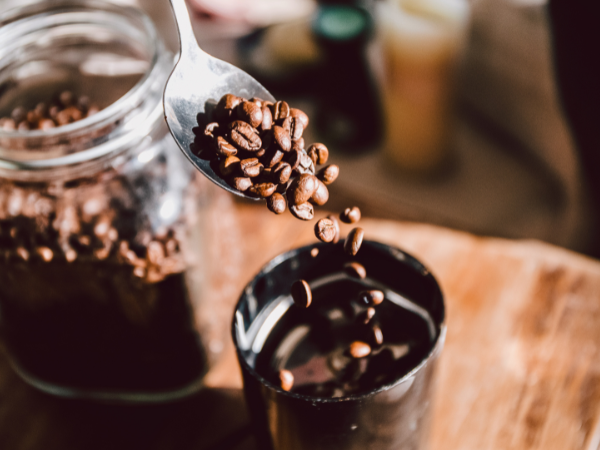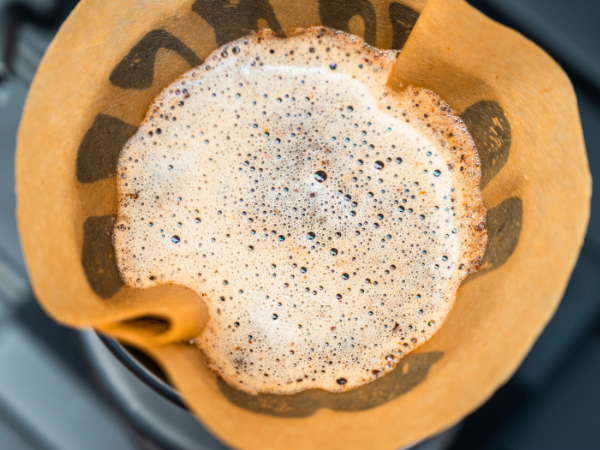High acidity can lead to an upset stomach or a bitter taste. If you crave a smoother, more balanced cup of coffee, you’re in the right place.
From choosing the right coffee type to adjusting your brewing method, these tips will help you enjoy a delicious cup without the sour aftertaste.
Understanding Coffee Acidity
Understanding coffee acidity is important. It helps you enjoy your cup without discomfort. Simple steps can help reduce acidity in your brew.
Acidity in coffee comes from several factors. The main causes include:
- Bean Origin: Different regions produce coffee with varying acidity levels. For example, African coffees often have a brighter acidity.
- Roast Level: Light roasts tend to have higher acidity. Dark roasts lose some acidity due to the roasting process.
- Brewing Time: Longer brewing times can increase acidity. Shorter brews often result in a smoother cup.
The combination of these factors affects your coffee’s taste. Some people enjoy the bright taste of acidic coffee. Others may experience stomach discomfort, especially if they are sensitive.
How Acidity Affects Flavor And Digestion
Acidity plays a key role in coffee flavor. It can bring brightness and complexity to your cup. However, it can also lead to digestive issues for some.
Here are some important points about flavor and digestion:
- Flavor: Acidity adds a sharpness to coffee. This can enhance fruity or floral notes.
- Digestion: Some individuals may feel discomfort. This can include heartburn or upset stomach.
If you are sensitive, consider low-acid options. You can also adjust brewing methods to reduce acidity. For example:
- Use a darker roast for less acidity.
- Experiment with brewing time for smoother coffee.
- Try cold brewing, which usually has lower acidity.
By knowing how acidity affects your coffee, you can enjoy every sip. Choose wisely for a better coffee experience.

Choosing The Right Coffee Beans
One simple step is choosing the right coffee beans. Not all beans have the same acidity levels. Low-acidity beans make a noticeable difference. They are easier on the stomach and taste delicious.
Opt For Low-acidity Varieties (e.g., Sumatra, Brazil)
Choosing low-acidity coffee beans is key. Some coffee varieties naturally have lower acidity levels. Here are a few options to consider:
- Sumatra: Known for its earthy flavors and low acidity.
- Brazil: Offers a smooth taste with mild acidity.
- Mexican: Provides a nutty flavor and low acidity.
- Colombian: Typically balanced with moderate acidity.
Beans from low altitudes and dry climates tend to have lower acidity. These beans grow where the climate is warm and dry.
Roast Level Matters – Go For Dark Roast
Dark roasts have less acid due to longer roasting. This process breaks down acids, leading to a smoother taste. Here’s why dark roast is a great choice:
- Less Acidity: Darker beans have a richer flavor and lower acidity.
- Bold Flavor: They bring out deeper, bolder notes.
- Less Bitter: Properly roasted dark beans are less bitter.
When brewing, experiment with different dark roasts to find your favorite. Each one can offer unique flavors while keeping acidity low.
Brewing Techniques That Reduce Acidity
This section covers brewing techniques that help lower acidity in your coffee brew.
Cold Brew Method
The cold brew method is a popular choice for reducing acidity. This technique brews slowly with cold water. It results in 60–70% less acidity compared to hot methods.
- Coarse grind your coffee: Use a ratio of 1 cup of coffee to 4 cups of cold water.
- Mix the coffee and water: Stir gently to combine.
- Let it steep: Cover and leave it in the fridge for 12 to 24 hours.
- Strain the coffee: Use a fine mesh strainer or coffee filter to separate the grounds.
- Serve: Dilute with water or milk as desired.
Cold brew coffee is smooth and less bitter. The lower acidity makes it easier on the stomach. It also brings out sweeter notes in the coffee.

Avoid Over-Extraction With Proper Timing
Brewing too long can pull acidic compounds from the coffee grounds. Aim for balanced extraction. Here are some tips to avoid over-extraction:
- Use the right brewing time: For drip coffee, aim for 4 to 5 minutes. For French press, stick to 4 minutes.
- Monitor your brew: Taste your coffee periodically to check for bitterness.
- Adjust grind size: A coarser grind can help reduce extraction time.
Each coffee type may require different timing. A well-timed brew can lead to a smoother flavor profile. This will help ensure your coffee remains enjoyable and less acidic.

Water And Additives To Neutralize Acidity
Water quality affects the flavor of coffee. Additives can balance acidity and enhance enjoyment. Simple changes can help create a smoother cup of coffee that is easier on your stomach.
Use Filtered Or Alkaline Water
Water is the main ingredient in coffee. The type of water you use affects acidity levels. Using filtered or alkaline water can help reduce acidity significantly.
Filtered water removes impurities. This leads to a cleaner taste. Alkaline water has a higher pH level. It helps neutralize the acidity in coffee. Here are some benefits:
- Enhances the flavor of coffee.
- Reduces bitterness.
- Promotes a smoother texture.
Consider the following table to see the differences:
| Water Type | pH Level | Effect on Acidity |
|---|---|---|
| Tap Water | 6-7 | Moderate acidity |
| Filtered Water | 7-8 | Lower acidity |
| Alkaline Water | 8-9 | Neutralizes acidity |
Switching to filtered or alkaline water is simple. It’s a small change that can greatly improve your coffee experience.

Add Milk Or A Pinch Of Salt
Another easy way to reduce acidity is to add milk or a pinch of salt to your coffee. Dairy neutralizes acid. It makes coffee smoother and creamier.
Here are some benefits of adding milk:
- Softens the bitterness of coffee.
- Increases creaminess.
- Improves overall mouthfeel.
Salt is another option. A small pinch cuts sharpness without altering flavor much. This simple trick can enhance the taste without making your coffee salty.
Helpful Tools And Products
Using helpful tools and products can significantly improve your coffee experience. These solutions can help you enjoy your coffee without the harsh acidity.
Use A Ph-reducing Coffee Filter
One effective method to lower acidity is using a pH-reducing coffee filter. These special filters absorb acids for a gentler cup of coffee.
- Reduces acidity in every cup.
- Enhances the natural flavors of coffee.
- Improves digestion for sensitive stomachs.
Many brands offer pH-reducing filters. They are easy to use and fit most coffee makers. Consider the following options:
| Brand | Features |
|---|---|
| Melitta | Special pH-reducing technology |
| GoldTone | Reusable and eco-friendly |
| Fellow | High-quality materials for better taste |
Switching to these filters can transform your coffee. Enjoy a rich, flavorful cup without the acidity.
Try Low-acid Coffee Brands
Another way to reduce acidity is by choosing low-acid coffee brands. These brands are specially roasted and processed to be low-acid. Popular low-acid brands include:
- Lifeboost
- Puroast
- HealthWise
Choosing these brands can lead to a more enjoyable coffee experience. Say goodbye to stomach discomfort and hello to great taste.

